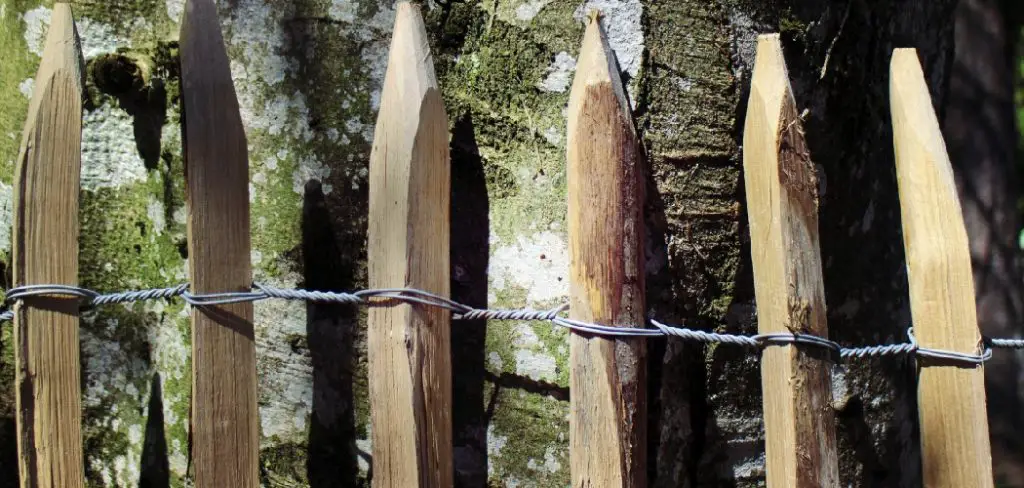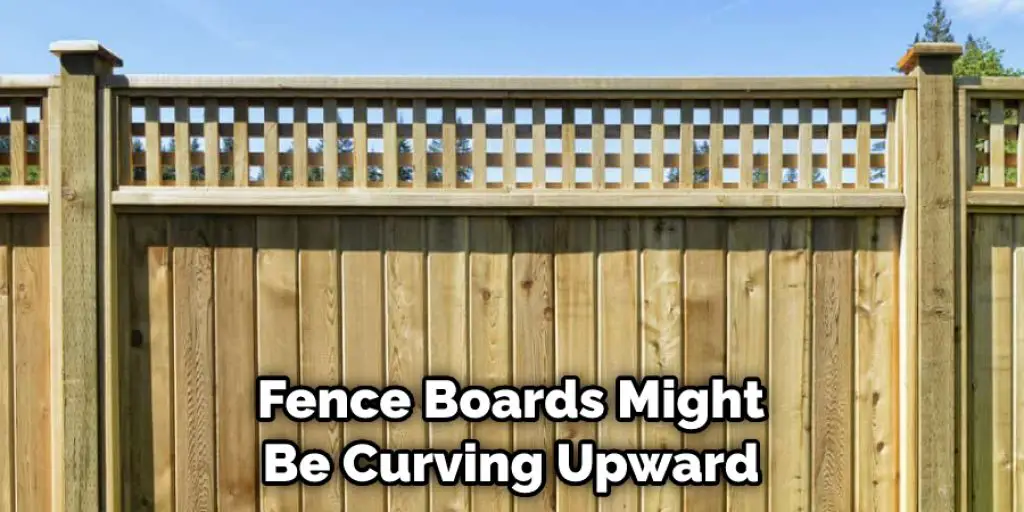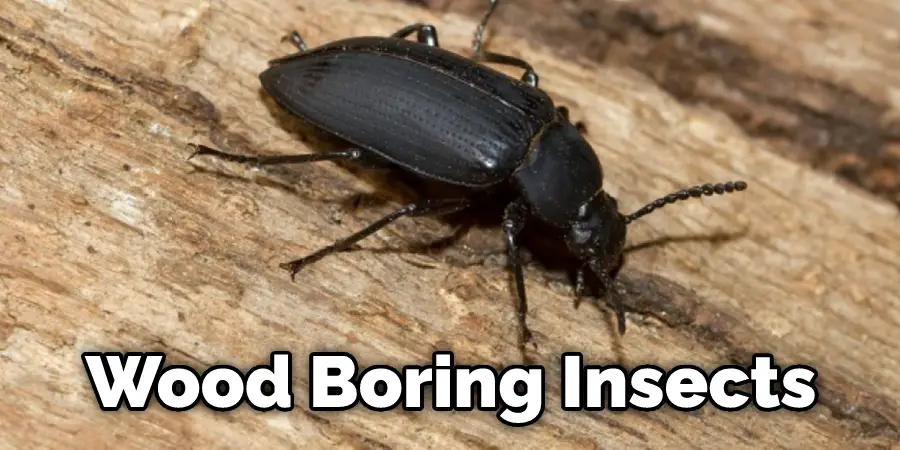Introduction
Fence boards are used to enclose the property and keep livestock in or out. They also provide a boundary for other things, like gardens. Fences can be wood, stone, brick, or even metal. There are many reasons why you might want to protect your fence from warping because it will make the board last longer and look better.

First, this article discusses how to prevent this issue with an introduction to fences themselves and what causes them to warp in the first place. Then, in this article, I will discuss how to keep fence boards from warping. So let us get started.
A Detailed Stepwsie Guide on How to Keep Fence Boards From Warping
There are several reasons fence boards warp, from weather to poor treatment. In some cases, board warping can be corrected. In others, it may be necessary to replace the warped boards with new ones.
Step 1 : Inspect Fence Boards for Warping
To determine whether your fence board is warped, carefully examine each one with a straight edge or board parallel to it. If any curve up or down even slightly, they have a “crown” and will need to be replaced as soon as possible to prevent further damage and make repairs more difficult. To find out why your fence boards might be curving upward or downward, keep reading.

Step 2 : Identify the Cause of the Warping
Once you have identified the warped fence boards, it is essential to determine the cause of the warping before taking corrective action. In most cases, there are three main reasons for board warping:
- Moisture Damage: Boards exposed to excessive moisture can warp due to the expansion and contraction of the wood fibers. This type of damage is often caused by a lack of proper ventilation or drainage around the fence and poor maintenance practices.
- Insect Damage: Wood-boring insects like termites and carpenter bees can create tiny tunnels in the wood, which can cause the boards to warp over time.

- Sun Exposure: Direct sunlight can cause the fence to expand and contract, leading to warping.
If you are unsure what is causing your fence boards to warp, it is best to consult with a professional before taking any corrective action.
Step 3 : Address the Cause of Warping
Once you have identified the cause of warping, it is essential to address it to prevent worsening problems. If the damage is due to moisture, you may need to install proper ventilation or drainage around the fence. If the damage is due to insect infestation, you must treat the affected boards with an appropriate insecticide. If the damage is due to sun exposure, you may need to install a shade cloth or other type of shielding device.
If you cannot correct the warping yourself, it may be necessary to call in a professional for assistance.
You can check it to Move a Fence.
Step 4 : Replace Warped Boards
If the fence board is warped beyond repair, it will need to be replaced. To do this, use a pry bar to remove the nails or screws that hold the board in place. Be careful not to damage the boards around it. Once the board has been removed, replace it with a new one and secure it in place with nails or screws. If you are having trouble removing a warped board, you may need to cut it out with a saw.
Be sure to wear safety goggles and other protective gear when doing this. Once the warped boards have been replaced, it is essential to keep an eye on them and address any new warping as soon as possible. Check fence boards regularly for excessive curving or distortion, and use the other steps outlined above to address it before it causes any further damage. If you have a fence board causing problems, contact a local home improvement professional to find out how they can help.
Why Does Warping Occur?
Warping is a natural and fundamental property of all wood. When wood seasons, it changes moisture content changes as the relative humidity changes. This leads to both expansion and contraction, which can cause warping. As the wood dries out or seasons, it will expand and contract across the width (short dimension) and along the length (long measurement). Movement along the long dimension usually has minimal impact on the appearance of a project; however, moving along the width can be pretty disturbing.
Wood Moves Differently for Two Reasons
1) The rate of movement is based on the amount of moisture in the wood. The more moisture, the more it will move.
2) The way the wood grain runs also affects the amount of movement. For example, wood that has a grain that runs perpendicular to the width will move more than wood with a grain that runs parallel to the width.
Precautions While Keeping Fence Boards From Warping
1) coat your new fence boards with a wood sealer before nailing them down. This will protect the wood and give it a nice color so you won’t need to paint it later. You are also mending your old pickets with new ones before painting prevents touching up different colors of paint, which would look horrible together in time.
You can find wood sealer at your local hardware store.
2) You should paint new fence boards before nailing them down to the wooden posts for best results. This way, the post holes will be covered up, and no water or wood grime will ever get in there to damage your fence boards’ ends or lower surfaces over time.
3) The best type of nails are galvanized because they are less likely to rust. However, if you are concerned about safety, use stainless steel nails instead for less risk of splinters into the skin that could become infected if left unattended by a doctor. Stainless steel also lasts longer without rusting, even slightly more expensive. Be sure to hammer in these nails carefully to not work their way back out over time.
4) It is a good idea to drill pilot holes before nailing down fence boards, especially if your fence posts are not perfectly straight. This will help the nails go in more straightforward and reduce the chances of the fence board warping later on.
Frequently Asked Questions
Does Staining a Fence Prevent Warping?
As it depends on a number of factors, including the type of fence that you are staining, the climate where you live, and how often you stain your fence. However, many experts believe that stains can help to prevent warping by providing a protective barrier against moisture and sunlight.
Stains also add color and life to fences, making them more visible and less drab. Additionally, they can act as insulation against cold weather or hot weather conditions. And last but not least – StainDeck offers an extensive selection of colors that will perfectly match your fencing! So why wait? Get started today and see for yourself how stained fences can protect your investment!
Why Do New Fence Panels Warp?
Warping is a common problem that occurs when wooden fence panels are installed incorrectly. The panels can warp due to moisture or high temperatures, and the effect can be seen as a distortion or curvature in the wood. This can cause major problems with the security and appearance of your fence, and it’s important to address the problem as soon as possible. Here are a few tips to help keep your fence panels in shape:
1. Install the panels correctly – Fence panels should be installed level and perpendicular to the fence line, and they should fit snugly without any gaps or spaces.
2. Keep the fence clean – If there is any moisture build-up on the panels, it will cause them to warp. Make sure to clean your fence regularly to prevent this from happening.
3. Avoid high temperatures – Extreme heat can also cause wood to warp, so make sure not to install your fence near sunny windows or in direct sunlight.
Can You Put Fence Boards Tight Together?
The best way to connect fence boards depends on the type of fence you are installing and the materials you are using. However, here are a few tips that may be of help:
1. Use a level – When connecting fence boards, it is important to use a level so that the boards are flush against one another. This will help prevent any gaps or creases, which can lead to problems with water and wind access.
2. Hold the boards together with clamps – If you are using wood screws or nails, it is best to clamp the boards together before nailing or screwing them in place. This will ensure a more secure connection and prevent them from moving during installation.
3. Make sure the joints are tight – Once the fence board connections are made, make sure they are tight by using a hand tool (i.e., hammer) or a screwdriver to push on each joint gently until the screws or nails bite into the wood. This will ensure that there are no gaps or spaces that could allow wind or water access.
Do Fence Pickets Need to Be Pressure Treated?
Yes, fence pickets typically need to be pressure treated in order to prevent rot and decay. This is because the moist environment of a pasture or garden can cause the wood fiber to break down and create acids that attack the structure of the lumber. Pressure-treating keeps these problems at bay by coating the fence post with a protective sealant that prevents moisture from entering and rotting the posts.
Conclusion
I hope this article has offered you all the necessary instructions on how to keep fence boards from warping. Ensure all the precautions are correct. Thank you and have a nice day!
You may read it also – How to Fill Gap at Bottom of Fence.








